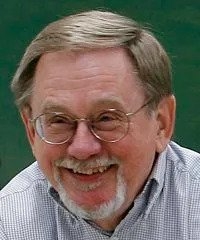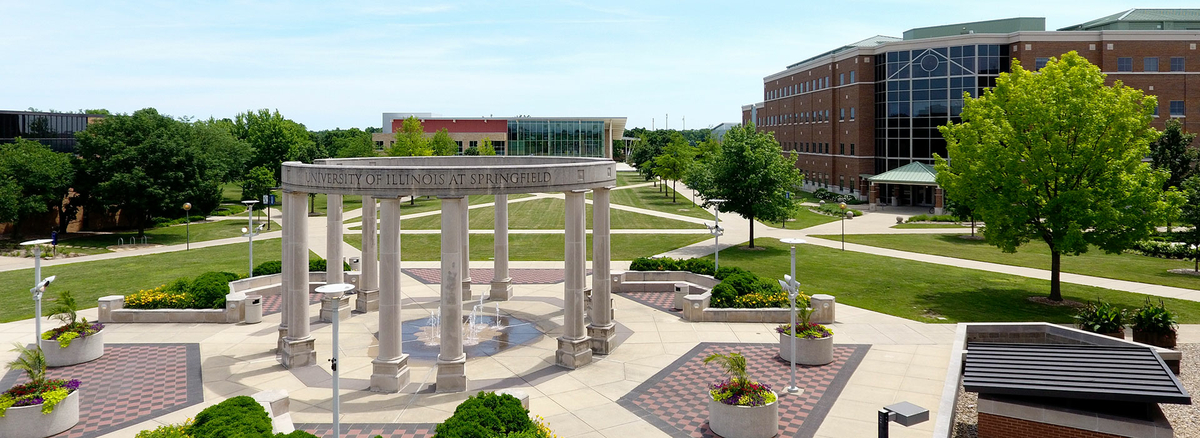Each month, UIS has a guest column spot in The State Journal-Register. I was given the opportunity to write this month’s entry about the Public Affairs Reporting program's 50-year anniversary.
Aside from getting to see my byline again in the newspaper where I spent 21 years of my life, I was happy that Mike Kienzler, a member of the first PAR class in 1972-1973, shared some memories from his days as a student and reporting intern at the Capitol.
I used a few details from Mike's story in my column, which you can read on the SJ-R's website. But Mike, whose post-PAR life included nearly 40 years as a reporter and editor at the SJ-R, shared several additional details that I didn't want to waste.
So I turn the rest of this post over to Mike ...

My introduction to the Public Affairs Reporting program was different from those of everybody else in the charter class of interns, and distinctively different from the way PAR students are chosen today. That’s mainly because I was so clueless.
I was two years out of Bradley University (poli sci, class of ’70). I had spent those two years emptying bedpans at St. Francis Hospital in Peoria – I was a conscientious objector to the Vietnam War, and my alternative service had been as a hospital orderly.
I came back to my hometown of Springfield in late summer 1972 with no particular career in mind. I applied for a couple jobs I was obviously unqualified for, but figured I’d end up taking a state or federal civil service exam and see where that led me.
Meanwhile, though, I realized Paul Simon, just off losing the Democratic gubernatorial primary to Dan Walker, but still lieutenant governor, had announced plans to teach a course in something called Public Affairs Reporting at the infant Sangamon State University. I admired Simon and figured taking a class from him would be interesting, even though I had almost no experience in journalism. (I had written exactly one story for the Bradley Scout as an undergraduate, and throughout the whole story, I misspelled the last name of the guy I wrote about.) I also figured I’d probably drop out mid-semester, whenever I got a paying job.
But as soon as I told the SSU registrar I was interested in PAR, I was whisked into the office of the school’s No. 2 or 3 administrator, Chris Vlahoplus (he was the former press secretary for Govs. Otto Kerner and Sam Shapiro). We had about a half-hour chat – Chris kept asking me if I wanted coffee; “Are you sure you don’t want any coffee?”—and I left thinking, “Wow, nobody ever treated me that way at a BU registration.”
I later figured out that Simon was SSU’s star prof, and Chris – whom I also eventually learned was a great, great guy – was making sure anybody interested in PAR got the full sales pitch.
But I still had no idea the PAR program included a six-month internship. I figured THAT out from my classmates a week or so into the course. They also informed me the internship paid $100 a week. Hell, that was a better offer than I’d gotten anywhere else.
So one day after class, I approached Paul and asked, “Um, can I still get into this internship thing?” He said, “Sure.” Of course – yet one more thing I didn’t realize till much later – he, and probably everybody else at SSU except me, thought I already was part of the intern group.
Like I said, clueless.
The first big story I turned in to Paul was a profile of Gov. Dick Ogilvie, running (unsuccessfully, it turned out) for re-election against Walker. I wrote what I thought was a tight, detailed article. Paul said it was pretty good, then gave it back to me, saying “Now, cut it in half.” When I turned in the rewrite, he said, “That’s better – here, cut it in half again.” By the time I’d cut three halves out of my epic, Paul deemed it good enough to send to a small downstate paper – wish I could remember which one – and they put it in print. It was my first legit clipping; at least I’d spelled “Ogilvie” right.
When the internships were assigned, I got a plum – the Chicago Tribune, whose Statehouse correspondent was John Elmer. It was a plum because the Trib was non-union, and that meant it was legal for me to start writing immediately; it took weeks, maybe a couple months, for the unionized papers to work out exemptions for the interns. The only problem was that, nonetheless, Elmer didn’t trust me to write anything. So I spent my time either as Elmer’s legman, rounding up quotes he used (sometimes) in his stories, or, with a freelance clerk, searching months’ worth of old Tribs for items worth putting in the bureau’s outdated clip files.
That gave me my first scoop. I, along with several other interns, was assigned that spring to cover a routine Walker speech at a local hotel. Unexpectedly at the speech, Walker announced that he opposed state reimbursement for deposits lost when Chicago’s City Savings and Loan had failed a decade earlier. It was a big deal in Chicago.
Because of my clipping duties, I was the only reporter there who realized Walker had made news. I was allowed to write briefs on my own by then, and I sent in a four-graf story. Both I and Elmer – who hadn’t been aware of my story – were surprised that evening when the Trib city desk burnt up the phone lines calling us for more details.
The next day, one of the other Trib writers in Springfield for the legislative session chided me when I arrived at the office. “You quoted the wrong Kosinski,” he said. “Kosinski?” I said, “I didn’t quote any Kosinski.” Turned out the culprit was John; asked to fill in missing info, he had identified the legislative Kosinski as Norbert; it was Roman. I may have gotten my first Trib byline for that story; Kosinskis notwithstanding, it made me, briefly, a celebrity among my fellow interns.
Major Statehouse issues during the 1973 legislative session included creation of the Chicago-area Regional Transportation Authority, the heated GOP fight to determine if W. Robert Blair would be re-elected House speaker – one of my earliest Statehouse memories is of Champaign Republican John Hirschfeld, standing outside the mezzanine pressroom so angry at Blair he was crying – and the many, many controversies created by Dan Walker, the “maverick” new governor.
But, like the rest of the country, the interns and, indeed, all the Statehouse press corps, were transfixed that session by a drama elsewhere. Whenever we had a break in the action in Springfield, you could find many of us on the edge of the leather couches in the pressroom TV lounge. We were watching the U.S. Senate’s Watergate hearings, Sam Ervin, Howard Baker and the cast, and we ached to be Woodward and Bernstein.



